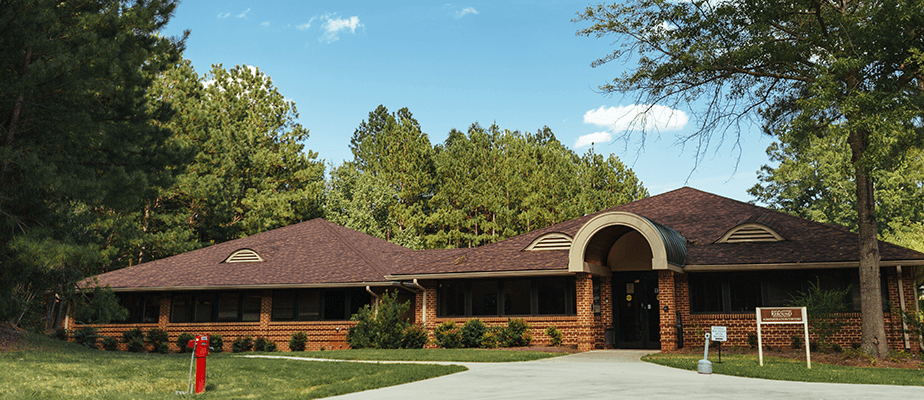Anxiety is a normal emotion that everyone experiences at different times in their life. While some amount of stress can be helpful as it may make you focus more intently on your work or reach deadlines, for some people the amount of anxiety they experience can create a large number of difficulties in their lives.
More About Anxiety
Learn More About Anxiety
Anxiety disorders are a group of mental illnesses that cause many individuals to feel frightened, uneasy, fearful, and distressed in situations that would not normally lead to these feelings. Untreated anxiety disorders can negatively impact a person’s whole life. It can inhibit their ability to work or study, cause social relationships with friends and others to become strained, and eventually lead to a life of isolation. Anxiety disorders can cause problems in even the most menial daily activities. The most common anxiety disorders include:
Generalized anxiety disorder (GAD) causes individuals to feel a severe, unremitting, chronic worrying about everyday life. This worry or anxiety lasts at least six months, impairing concentration, making carrying out routine tasks complicated, and occurs for many hours throughout the day. Some people who have GAD may spend a majority of their time feeling dread and anxiety that is not attached to any particular stimuli.
Panic disorder is characterized by panic attacks, or sudden feelings of terror that can occur repeatedly and without warning. Physical symptoms of a panic attack can be extremely frightening and may include chest pain, heart palpitations, feelings of being disconnected, and fear of dying. Many people who have panic disorder are ashamed of their panic attacks and may start to avoid going certain places that may bring about a panic attack.
Post-traumatic stress disorder (PTSD) is an anxiety disorder precipitated by a traumatic event that involved experiencing or witnessing a threat of death. People who have PTSD suffer from nightmares, hyper vigilance, flashbacks, and emotional numbness. Without proper care, these feelings tend to grow worse over time.
Phobias are an irrational and disabling fear of something innocuous that leads to avoidance of events or situations that may bring about feelings of extreme fear, panic, or dread. Phobias may be based upon an object (snakes) or a situation (heights).
Social phobia (social anxiety disorder) is the debilitating fear of being seen in a negative way in public that can cause a person to avoid social situations. It can be hard for people with a social phobia to productively work or go to school without experiencing feelings of extreme anxiety and dread.
Fortunately, anxiety disorders are a treatable mental disorder. With proper care and therapies, people who have anxiety disorders can go on to lead normal, productive, and fulfilled lives.
Statistics
Statistics on Anxiety
Anxiety disorders are the most common mental illnesses in the United States, affecting about 20% of the population. This means that about 40 million individuals in the United States suffer from anxiety causing unnecessary fear, worry, and stress. While the average age of onset is 31 years of age, it has been reported that approximately 8% of teens aged 13 to 18 have an anxiety disorder, with symptoms most commonly appearing around age 6.
What Causes Anxiety?
Learn About the Causes and Risk Factors for Anxiety
It’s generally accepted by researchers that anxiety disorders are not the result of one particular factor, but instead caused a combination of factors working together. The causes of and risk factors for anxiety disorders include:
Genetic: Anxiety disorders tend to run in families, which suggests that these disorders have a large genetic component. People with first-degree relatives, such as a parent or a sibling, who have an anxiety disorder are more likely to have an anxiety disorder than those without a similar family history.
Physical: Neuroimaging of the brains of people who have anxiety disorders have shown that there are specific areas of the brain – the amygdala and the hippocampus – that are involved in anxiety disorders. Deficits in these parts of the brain that are involved in anxiety and fear can lead to the development of an anxiety disorder.
Environmental: Significant life experiences and stressors that can overwhelm a person’s ability to cope in these situations can lead to the development of anxiety disorders.
Risk Factors:
- Being female – women are 60% more likely than men to experience anxiety disorders
- Chronic health disorders can lead to constant worry about health and finances
- Stress
- Personality types
- Experiencing military combat
- Childhood trauma, neglect, or abuse
Signs of Anxiety
Signs and Symptoms of Anxiety
The symptoms of anxiety disorders depend upon the type of anxiety disorder, frequency of symptoms, presence of co-occurring disorders, and severity of the disorder. The most common symptoms of anxiety disorders may include:
Behavioral Symptoms:
- Social withdrawal
- Inability to fulfill responsibilities at work, school, or home
- Restlessness
- Inability to fall asleep or stay asleep
- Irritability
- Easily startled
- Twitchiness
- Decreasing ability to perform activities of daily living
- Using more and increasing amounts of drugs or alcohol to relieve symptoms
Physical Symptoms:
- Fatigue
- Lightheadedness
- Hot flashes
- Shortness of breath
- Nightmares
- Pounding heart
- Dizziness
- Insomnia
- Changes in eating patterns
- Sweating
- Nausea, vomiting, diarrhea
- Muscle tension and aches
- Headaches
- Frequent trips to the bathroom
Cognitive Symptoms:
- Difficulty concentrating
- Mind going blank
- Irrational fear and dread
Psychosocial Symptoms:
- Feelings of helplessness
- Mood swings
- Feeling as though danger is around every corner
- Constant obsession and concern about small or large problems
- Flashbacks
- Feelings of worthlessness
- Hopelessness
Effects of Anxiety
The Effects of Anxiety
If left untreated, the effects of anxiety disorders will slowly overtake every aspect of an individual’s life. Long-term effects of untreated anxiety disorders may vary based upon individual genetic makeup, presence of co-occurring disorders, and severity of symptoms. The effects of anxiety disorders may include:
- Substance abuse and addiction
- Social isolation
- Job loss or scholastic failure
- Migraines
- Digestive or bowel problems
- Insomnia
- Inability to go certain places or see certain people
- Self-harm
- Suicidal ideations and behaviors
Co-Occurring Disorders
Anxiety and Co-Occurring Disorders
Anxiety disorders are often accompanied by other types of mental disorders. The most common co-occurring disorders include:
- Schizophrenia
- Substance abuse
- Alcoholism
- Borderline personality disorder
- Depressive disorders
- Bipolar disorder

















